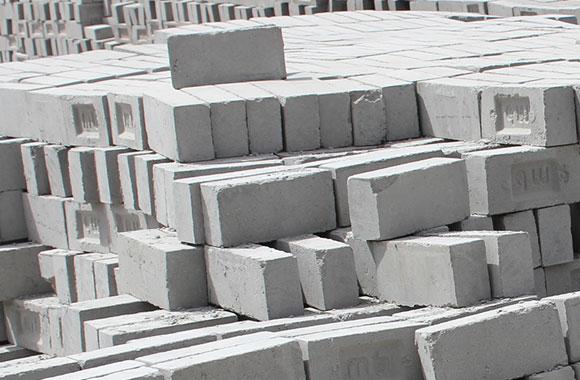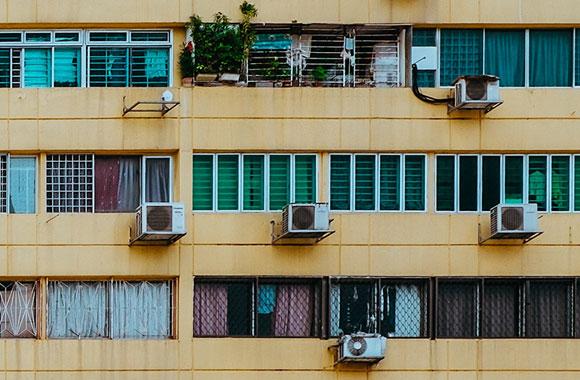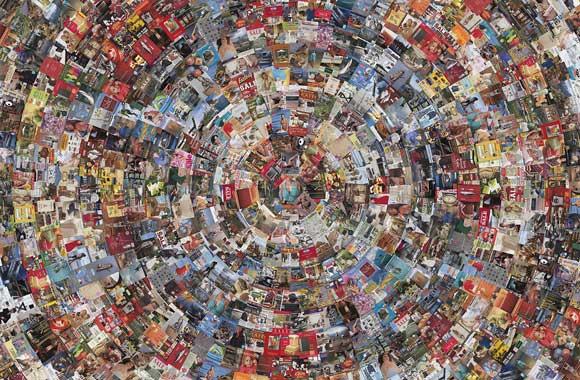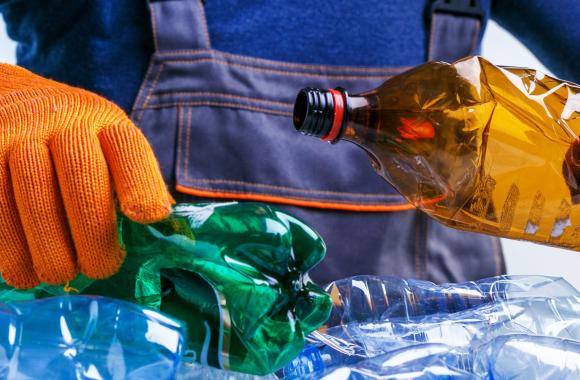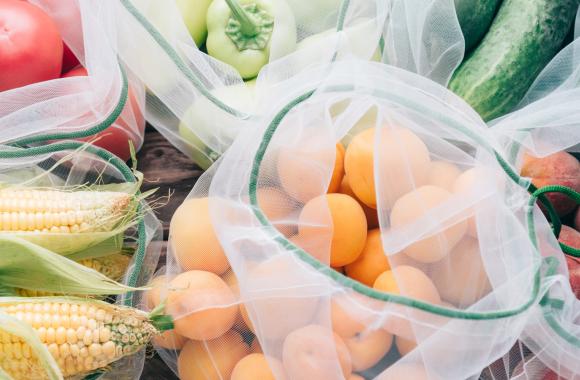Bioplastics
Most plastics are made from fossil fuels, but bioplastics utilize plants as an alternative source of carbon. They often have lower emissions and sometimes biodegrade.
Reduced/Sequestered
2020–2050
To Implement
Operational Savings
Impact
We estimate the total production of plastics to grow from 311 million metric tons in 2014 to at least 792 million metric tons by 2050. This is conservative, with other sources estimating more than 1 billion metric tons if trends continue. We model the growth of bioplastics to capture 89–100 percent of the market by 2050, avoiding 1.33–2.48 gigatons of emissions. The net first cost to implement this solution is US$82.70–97.76 billion and the lifetime net operational cost/saving is US$0.
Introduction
Bioplastics (also referred to as biopolymers) are plastic materials made from biomass. Project Drawdown’s Bioplastics solution replaces traditional plastics made from petroleum with bioplastics.
Globally, we produce roughly 365 million metric tons of plastic each year. Almost all of it is made from fossil fuels. Experts estimate that 90 percent of current plastics could be derived from plants instead. Substituting bioplastics for conventional plastics reduces climate emissions because it uses carbon from the atmosphere rather than from fossil fuels, keeping climate impacts low. For bioplastics to be more sustainable than conventional plastics, however, we need to be able to separate them from other waste and process them appropriately.
Methodology
To estimate the climate and financial impacts of our Bioplastics solution, we 1) forecasted plastics production from 2014 to 2050; 2) determined current (2014) demand for bioplastics; 3) forecast future adoption through 2050; 4) derived an emissions mitigation value; and 5) calculated emissions mitigated and costs in comparison with a reference scenario that keeps bioplastics at its current percentage of global plastics production.
Total Addressable Market
We estimated the total addressable market for plastics from four sets of plastics adoption forecasts from 2020 to 2050. We derived the four data sets primarily from PlasticsEurope (2019) and the World Economic Forum (2016), using different growth rates and benchmarks.
Adoption Scenarios
We calculated impacts of increased adoption of bioplastics from 2020 to 2050 by comparing two scenarios with a reference scenario in which the market share was fixed at current levels.
We created custom adoption scenarios for bioplastics by using Project Drawdown’s land use models to set plausible land use for generating bioplastic feedstock; considering the municipal solid waste fractions that could plausibly be attributed to recyclable or compostable plastics; and extrapolating from existing prognostications from European Bioplastics (2018).
-
Scenario 1: The bioplastics market grows to 92.2 million metric tons, or 12 percent of the total plastics market in 2050.
-
Scenario 2: The bioplastics market grows to 356.8 million metric tons, or 46 percent of the market in 2050.
Emissions Model
We calculated approximately 0.828 metric tons of carbon dioxide equivalent emissions per metric ton of bioplastics produced, compared with approximately 2.4 for traditional plastics. Despite the large potential for improvement in bioplastic technologies in the coming years, we assumed this emissions reduction value will stay constant through 2050.
Financial Model
We based production costs for both traditional plastics and bioplastics on the most currently available price data and a projection for prices in 2020 from the literature (Shen, 2009, Rorrer 2017, Ashok 2018). We averaged data found in the literature, via email, and in online market reports from 2011 to 2015 to estimate current market prices, then combined them with future estimates for polypropylene and bioplastics in an attempt to accommodate both historical prices and future trends within the model. Rather than try to predict undulations in the market, we assigned a static price over the next 30 years that we see as an approximation of the average price in that time frame.
Integration
Integration with other Project Drawdown solutions limited the adoption of bioplastics due to limits in available cropland. We also made assumptions as to what portion of bioplastics is compostable and what is recyclable so we could adjust the market for Composting and Recycling solutions as well as the fraction of waste, low heat value, and degradable carbon remaining to be used in Waste-to-Energy and Landfill Methane Capture solutions.
Results
Scenario 1 achieves 1.33 gigatons of total carbon dioxide equivalent reductions from 2020 to 2050 with a net first cost of production of US$82.70 billion.
Scenario 2 showed a mitigation of 2.48 gigatons from 2020 to 2050 with a net first cost of production of US$97.76 billion.
The lifetime net operational savings/cost is US$0 for both scenarios.
Discussion
Bioplastics technologies are nascent, so there is room for improvement in this model. While quite a bit of literature is dedicated to quantifying the climate impacts of fossil plastics and bioplastics, it’s difficult to do so for the many different types of bioplastics, each with different feedstocks and production techniques. Future models should consider polymer types, production methods, and prices separately rather than aggregating them.
The financial breakdown of plastic commodities and feedstock availability could be more robust and include a techno-economic analysis of bioplastics. Production models could also include more geographically nuanced data regarding production rates, recycling rates, and source reductions.
Regardless of possible refinements this analysis suggests that the bioplastics market can grow to replace a significant portion of traditional plastics while reducing climate emissions.
References
Ashok, R. P., Oinas, P., Lintinen, K., Sarwar, G., Kostiainen, M. A., & Österberg, M. (2018). Techno-economic assessment for the large-scale production of colloidal lignin particles. Green Chemistry, 20(21), 4911–4919. https://doi.org/10.1039/C8GC02805B
European Bioplastics. (2018) Bioplastics Facts and Figures. https://docs.european-bioplastics.org/publications/EUBP_Facts_and_figures.pdf
Morlet, A., Blériot, J., Opsomer, R., Widmer, S., Banks, I., De Smet, M., Murphy, J., Steventon, P., Rodger, S., Waughray, D., Chalmers, N., Pennington, J., Baudoin, L., Defruyt, S., Stuchtey, M. R., Swartz, S., and Vanthournout, H. (2016). The new plastics economy: Rethinking the future of Plastics. World Economic Forum. http://www3.weforum.org/docs/WEF_The_New_Plastics_Economy.pdf
Rorrer, N. A., Nicholson, S., Carpenter, A., Biddy, M. J., Grundl, N. J., Beckham, G. T. (2019). Combining Reclaimed PET with Bio-based Monomers Enables Plastics Upcycling. Joule, 3(4), 1006-1027. DOI: 10.1016/j.joule.2019.01.018
Shen, L., Haufe, J., Patel, M. K. (2009). Product overview and market projection of emerging bio-based plastics PRO-BIP. Copernic Institute for Sustainable Development and Innovation - Utrecht University. https://www.researchgate.net/publication/216092211_Product_overviw_and_market_projection_of_emerging_bio-based_plastics_PRO-BIP_2009
What You Can Do
Use sustainably made bioplastics in place of conventional plastic items.
Encourage your employee or campus cafeteria and local restaurants to replace conventional plastics with the products you found to be the best.
- Expand your knowledge by exploring another Drawdown solution.


